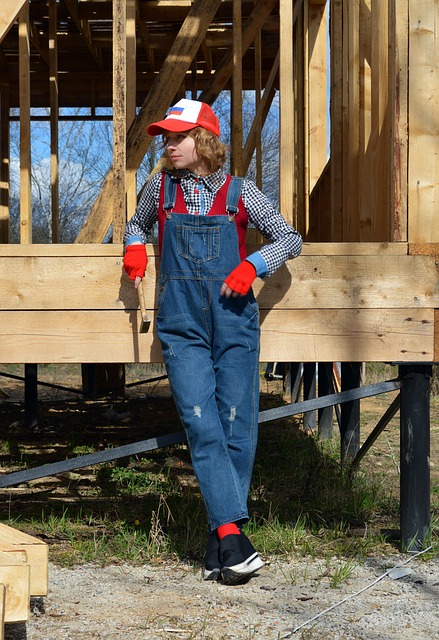Soil shifting, a natural force causing residential foundation damage, requires proactive measures. Poor drainage, expansive clay soils, and uneven compaction contribute to settling and cracks. Early detection through inspections, soil testing, and signs like wall or floor unevenness prevents costly repairs. Residential Foundation Repair offers solutions like piering, underpinning, and anchors. Regular maintenance, addressing moisture, and proper construction practices minimize soil shifting, enhancing foundation longevity and reducing repair needs.
Soil shifting and foundation issues are common problems that can significantly impact residential structures. This article delves into the intricate world of soil stability, exploring its effects on homes and offering comprehensive insights into prevention and remediation. From understanding the underlying causes to identifying early signs of foundation trouble, we provide practical guidance. Learn about the critical role of soil testing in prediction and mitigation, along with effective repair options and long-term maintenance strategies for ensuring your home’s structural integrity and resilience against soil shifting, ultimately addressing key aspects of residential foundation repair.
Understanding Soil Shifting and Its Impact on Residential Structures

Soil shifting, a geological phenomenon, refers to the movement and deformation of soil due to various factors like water, weather, or underground activities. This process can significantly impact residential structures, especially those built on vulnerable soil types. When soil beneath a house shifts, it causes the foundation to settle unevenly, leading to cracks in walls, floors, and ceilings, which are telltale signs of potential structural damage.
For homeowners, recognizing these issues early is crucial for preventing extensive and costly residential foundation repair. Regular inspection and understanding basic soil science can help identify problematic areas. Foundation issues due to soil shifting can range from mild cracks to severe structural instability, emphasizing the need for timely intervention.
Common Causes of Soil Instability Around Homes

Soil instability around homes is a prevalent issue that often requires residential foundation repair services. Several factors contribute to this problem, making it essential for homeowners and builders alike to understand these common causes. One of the primary reasons for soil shifting is poor soil drainage. When soil becomes waterlogged, its ability to support structures weakens, leading to settlement and cracks in foundations. This is particularly common in areas with heavy rainfall or where ground water levels are high.
Another significant cause is expansive clay soils, which can swell and contract with changes in moisture content. This movement exerts pressure on foundations, causing heaving, settling, or even structural damage over time. Uneven soil compaction during construction or nearby excavation projects can also disturb the soil balance, resulting in uneven settlement and foundation issues. Identifying these causes early through proper site preparation and residential foundation repair techniques is crucial to prevent costly damages.
Identifying Foundation Issues Early: Signs to Watch Out For

Recognizing foundation issues early is crucial for effective residential foundation repair. Signs of trouble can manifest in various subtle ways, requiring keen observation from homeowners. One common indicator is uneven floors or walls, where some sections may be higher or lower than others. This could point to settlement or shifting in the foundation. Cracks in interior walls, especially those that aren’t simply cosmetic, are another red flag. Wide, new cracks, particularly in load-bearing walls, suggest potential structural problems.
Door and window frames that stick or fail to close properly can also signal foundation issues. Walls or floors pulling away from fixtures like baseboards or moldings are further signs to watch for. Water spots or moisture buildup on walls and ceilings, especially in areas not normally exposed to humidity, may indicate a leaking foundation. If you notice any of these signs, contacting a professional for an inspection is the best course of action to prevent more severe and costly foundation damage down the line.
The Role of Soil Testing in Predicting and Preventing Damage

Soil testing plays a pivotal role in predicting and preventing damage to residential foundations. By analyzing soil samples, experts can assess the stability and composition of the ground, identifying potential issues like soil compaction, erosion, or the presence of organic materials that could compromise the foundation’s integrity. This proactive approach is essential for Residential Foundation Repair as it allows for early detection of problems before they become severe.
Through soil testing, contractors can make informed decisions about the best course of action to stabilize the soil and reinforce the foundation. This might include implementing strategies such as deep soil mixing, adding structural supports, or adjusting landscaping to minimize water runoff, all of which contribute to long-term foundation health and structural integrity.
Repair Options for Stabilizing a Shifting Foundation

When dealing with soil shifting and foundation issues, there are several repair options available for stabilizing a residential foundation. One common approach is piering, where metal or concrete piers are installed to support and realign the foundation. This method effectively redistributes weight and prevents further movement. For severe cases, underpinning might be necessary. This involves constructing a new foundation below the existing one, providing enhanced structural support.
Another popular solution is the use of foundation anchors. These mechanical devices are drilled into the stable layers of soil beneath the shifting foundation, securing it in place. In some instances, adding a basement or crawl space can help stabilize the structure by providing additional weight and support. Each repair option caters to different levels of damage and budget considerations, ensuring homeowners have various avenues to restore their residence’s structural integrity.
Long-term Maintenance Strategies for Resilient Foundations

To ensure the longevity and resilience of residential foundations, implementing long-term maintenance strategies is paramount. Regular inspection plays a crucial role; identifying potential issues early allows for proactive measures. Homeowners should be vigilant, checking for signs of shifting, cracks, or water damage. Annual assessments by professionals are also beneficial to assess the overall health of the foundation.
Prevention is key; addressing moisture problems, managing drainage, and maintaining proper ventilation can significantly reduce risks. Regularly sealing cracks and gaps prevents insect infestations and further deterioration. Additionally, reinforcing supporting structures and ensuring proper compaction during construction or renovation projects can mitigate soil shifting issues over time. These strategies contribute to the overall stability of residential foundations, minimizing the need for costly repairs.
